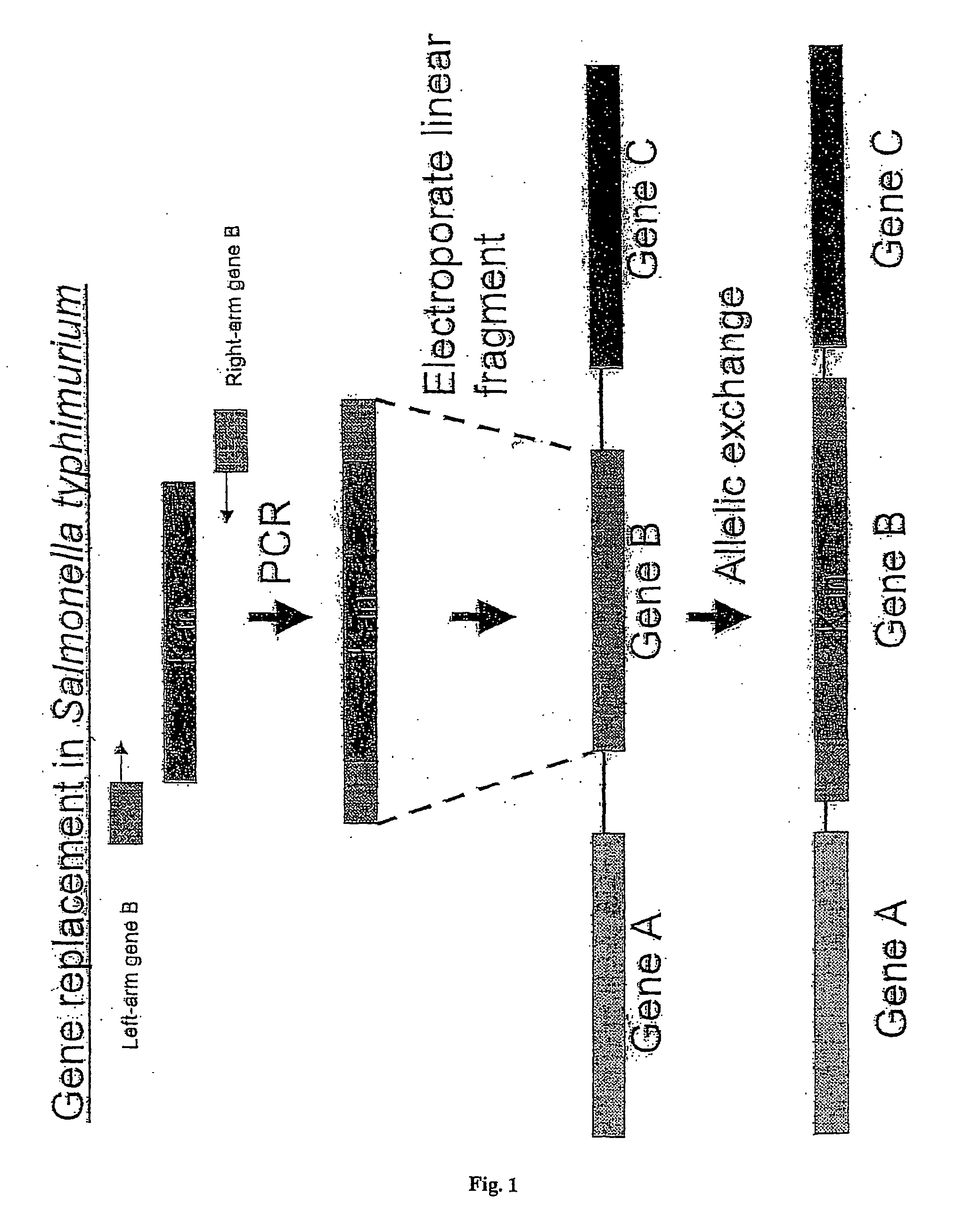Mutagenesis technique
a technology of mutagenesis and symbiosis, which is applied in the field of mutagenesis technique, can solve the problems of complex process of allelic exchange, time-consuming and laborious, and system is not applicable to wild-type e. coli
- Summary
- Abstract
- Description
- Claims
- Application Information
AI Technical Summary
Problems solved by technology
Method used
Image
Examples
experiment 2b (
11 Experiment 2b (electroporation with a range of concentrations of linear ilvA PCR products in cells expressing exo, bet and gam) Experiment run in duplicate ds-DNA ss-DNA 1.00 .mu.g 54 33 2 1 0.75 .mu.g 26 9 0 1 0.50 .mu.g 42 6 0 0 0.25 .mu.g 55 2 0 0 0.10 .mu.g 35 57 0 0
Conclusion
[0197] Previous reports have suggested that in order for allelic exchange to function with the .lambda. recombination genes, the three components exo, bet and gam, are required. We show here that the presence of the Exo and Bet proteins in an E.coli cell can allow the generation of allelic exchange mutants at a similar frequency to exo, bet and gain expressing cells. Importantly, the expression of Bet alone is sufficient to generate allelic exchange mutants, particularly when single-stranded DNA is used as a template.
PUM
| Property | Measurement | Unit |
|---|---|---|
| concentration | aaaaa | aaaaa |
| temperature | aaaaa | aaaaa |
| temperature | aaaaa | aaaaa |
Abstract
Description
Claims
Application Information
 Login to View More
Login to View More - R&D
- Intellectual Property
- Life Sciences
- Materials
- Tech Scout
- Unparalleled Data Quality
- Higher Quality Content
- 60% Fewer Hallucinations
Browse by: Latest US Patents, China's latest patents, Technical Efficacy Thesaurus, Application Domain, Technology Topic, Popular Technical Reports.
© 2025 PatSnap. All rights reserved.Legal|Privacy policy|Modern Slavery Act Transparency Statement|Sitemap|About US| Contact US: help@patsnap.com

